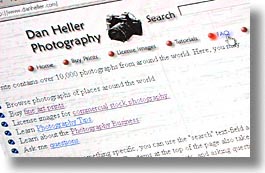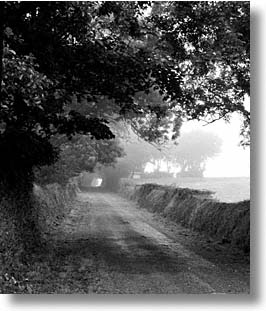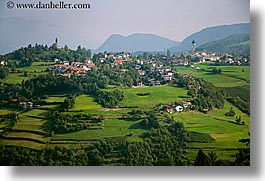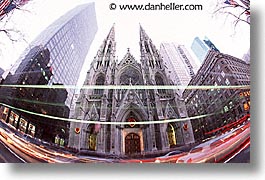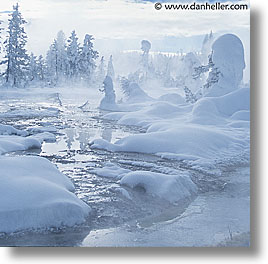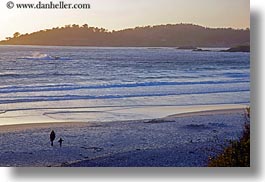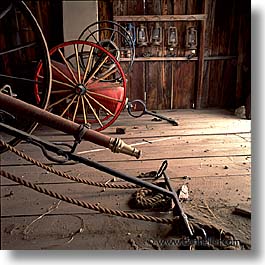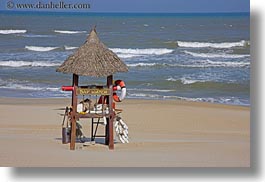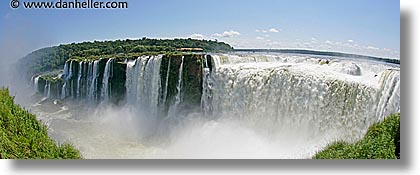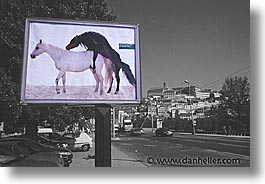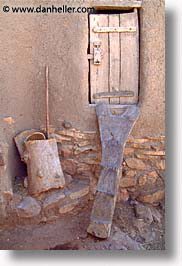|
Markers indicate locations for photos on this page.
Accuracy responsibility of Google Maps
Google Map Goes Here
If you see this text, the map is still loading (or there's an error). |
The sword cuts both ways. While the advantages can be considerable, following a poor strategy in implementing an online presence can be costly in time, money and lost opportunity. So, it's imperative to understand your objectives ahead of time. This doesn't mean you have to know how it's going to look and function from the beginning; you can and should approach this slowly, in a step-wise fashion. What appears simple and easy at first can be overwhelming, so try not to bite off more than you can chew.
A better way to learn how to build websites is from sources that are not
trying to sell a business model. Books that teach about the technology
and the paradigms behind the web are the most useful because you can
apply them to whatever business model you're developing. Also keep
in mind that photo businesses vary dramatically from one to the next,
and there is no one-size-fits-all methodology for them, let alone how
you build or design a website.
It may not surprise you to know that there are no answers to those questions. There are no formulas, no quick equations, and most of all, no empirical data to support sweeping design formats that are proven to garner a successful website. Therefore, one person's experience should not necessarily be held up as a model for others to follow. That said, there are small, more subtler guidelines based on emerging findings (that span many industries, not just photography) that support the notion that certain design elements are more effective than others. Like any science in an emerging field of study, it's easier to identify what doesn't work than what does, such as unsolicited emailing, to name an obvious one. However, even just a few short years ago, these very techniques were thought to be the best tactics for drawing web traffic. The challenge is to find those "known" techniques, and to utilize them (or avoid them) in combination with the your particular business type. This type of analysis must be individualized for each photographer. Professing a "formula" for success at this point would be selling snake oil. This fact may disappoint those who seek quick and easy solutions, but if you read this chapter carefully and thoughtfully, you'll see there is some diamond dust in the coal.
Because this ill-perceived notion by professionals about the web, I had very little competition on the net in the mid-1990s, allowing my business to grow at a much more accelerated rate, than if the professional community had adopted the net sooner. On the other hand, I wasn't a very good photographer either, so it sort of leveled the playing field. But this is also what taught an invaluable lesson: quality is not as important as other factors when it comes to the photo business. As I became a better photographer, and increased the quantity of images, my business spiked upwards in 2000; I was getting about 2000 visitors a month to my website, with about $1000 a month in sales. Now, in December 2004, I get about 10 thousand visitors a day which has over 18,000 images. These photos represent a small percentage of my entire photo collection, which exceeds 300,000 images. (I never expect to put them all online.) I add about 5,000 pictures to my collection every quarter; when I'm not traveling, I manage to get another several thousand a year in various local shoots and personal projects. That's my story, but it is by no means representative of the typical one as there is no "typical" story yet. I do not necessarily pitch my experiences as the secret to success, because I know it's not that simple. However, there are things to learn from what I've gone through, along with general lessons, which are all discussed here. One of those first lessons is to understand what people do when they come to your site, why they're there in the first place, and what frame of mind they're in.
As for timeframes, getting your site up and functional depends on how much you want to do (just a portfolio, or do you want to sell pictures?). This is why it's important for you to have a sense for your overall business objectives first. The options for getting your images online are many, so the long-term timeframe cannot be pinpointed. However, since it's easy to get images online in some manner within a few hours, it may be merely pragmatism that you get the quick and easy work out of the way first, and then re-examine your web strategy as your business evolves. It can take a day to get a basic website up that has your name and info, and it can take years to have a full-fledged shopping site. The wide spectrum in between will come in stages.
For these, let's discuss some options for how you can get started:
Since most sites allow you to customize and populate "your area" of the site with your own photos and contact information, this beginning step is "good enough" for even the most skittish beginner. Most are free to use (you only need to register), ranging from well-known names, like Yahoo (www.flickr.com) and Microsoft (http://photos.msn.com/), as well as more focused sites, like www.photo.net and www.smugmug.com. There are other specialty sites as well, for wedding photographers, portrait shooters, fashion (for both the photograph and the model), and so on. A simple web search yields many options. The two drawbacks to using photo-forum websites are:
While you may get a lot of visits from other photographers that also share the site (and it's rare that photographers buy others' work), no one else will find you. Most traffic that comes to a typical website is the result of people submitting keywords to search engines. But, search engines do not index photo sites like this, so people looking for pictures online are not likely to find yours.
Neither of these "drawbacks" are a surprise—these sites aren't designed to be anything more than this. It's sort of like buying a car: you have to know ahead of time that you have to know how to drive and where you're going. You don't expect to buy a car and just get in and be driven around by it. Sure, you can hire a driver, but you still need to direct them. The same is true of these websites for photographers: know what you're buying. I suggest them because they are great for getting started, but you have to spend more of your time marketing yourself through more traditional, non-internet methods. How you do that depends greatly on the kind of business you're running. A wedding and portrait business might do well with newspaper and phone book ads than a website for advertising and generating business, but that doesn't dismiss the importance of having a web presence. Here, a site would be used as a sales support mechanism, though. That is, customers will do their "due diligence" on you by looking at your site. If you don't have a site or any sort of presence, that could work against you. Whatever you do, I strongly advise against putting your images on photo sites for which you implicitly grant "usage rights" to the company that is hosting your photos, unless you are given some sort of commission in return. That is, some sites will use your images for commercial use, and give you a commission when your images are used. While it's a great idea, the business model is unproven as yet. (That said, I've got my eye on the trend—it could be promising.) Even then, not all sites are equal. I've seen an emerging number of sites that sell cards and other trinkets that have photos in them, and pay the contributing photographer a royalty based on the number of images sold. You should read the license terms of any given site before joining up, and also probe discussion forums for independent accounts from others who may have experienced the site.
As is always the case with online communities, be a critical thinker:
not everything that everyone says is gospel, or even true. You are
advised to spread your time among many forums to gather the broadest
set of possible truths.
As I noted, most photo community sites do not allow you to sell your own photos. There are some exceptions to this, and one is www.shutterfly.com, which is one of many that do the following: you sign up as a "professional photographer" (which requires an application and approval process). Once accepted, you then upload your photos and set your own prices on prints. You can direct people to your gallery on their site, and visitors can place orders themselves for the size and format of each print. The advantages are clear: you don't have to build a website, and you don't have to be part of the ordering or printing/delivery process. Customers pay shutterfly directly, who will print and ship orders. You'll get your check after each month's worth of sales. (This applies to prints only—they don't handle licensing of photos.)
All sounds good right? Well, there are drawbacks, and it doesn't apply
only to Shutterfly; just about every site that does this sort of thing
suffers these drawbacks. The main one is that these sites are designed for
one kind of shooter: the "event photographer." For example, if you just
shot a wedding, you could just upload your pictures to the site, and
then tell your clients to go there to order all the prints they like. You
don't have to do anything beyond that. Unless you're that kind of shooter,
the usefulness of such sites is limited. Paper sizes are fixed, and styles
are limited (often to only one of glossy or matte finish), which may not
match your artwork. Customer service—like the rest of the site—is really
designed for consumers, not pros, so you're not going to get the kind of
attention you may need to help your customers, if there's a problem.
And, once again, search engines never index those sites, so you're never
going to be seen by anyone whom you don't explicitly inform.
First, a general statement about outsourcing that applies to any and all businesses: You often hear about large companies saving lots of money by outsourcing work to foreign countries with cheap labor. As a byproduct of that, many contractors pitch themselves as workers with focused expertise that can save a company money. But there's a fine line between short-term and long-term savings, and this isn't just limited to money. There's time an efficiency to consider. In reality, small companies who outsource do it far more than they should. People assume that business is just a set of widgets stuck together in the right way. It doesn't work that way; companies succeed because individuals within them have particular motivation and loyalty that cannot be reproduced by those whose compensation model is built on an ever-expanding workload that maximizes hours paid. It's not that people are dishonest; it's just the wrong kind of incentive to start a working relationship. And yes, such outsourced workers can do a good job, but a good company outsources only the most basic tasks—those not mission-critical to executing a business plan. Accountants and lawyers perform important tasks, but they don't produce the actual service or mission-critical tasks that differentiate a company from its competitors. Those tasks should not be outsourced. So, when it comes to outsourcing the job of designing and building your website, the decision has everything to do with scope: Are you designing a complex shopping site where your success or failure is dependent on how well this site works? And if so, how cost-effective is it to hire someone else, vs. learning to do it yourself, or hiring someone as an employee (where they aren't always on the lookout for the next paying client, as most contractors tend to be)? Alternatively, if you're just looking to build a platform to display your own photos and provide contact information, then in this day and age, personal websites are easy and cost-effective to do yourself. There are free products that produce very good websites. Adobe's "Bridge" can set up a fairly simple page of images in a few minutes; their paid-for programs are increasingly more useful. In fact, you can say that of any modern web application these days. But, anything more than that, and you will probably find that finer details become increasingly more important, requiring more of your time and attention to oversee development. There eventually come a cross-over between whether you're actually saving time and money using and outside developer, or whether you should do it yourself. If you're undecided, or feel you want to start with one and migrate to the other, here's what to be aware of: the more you want to do, the further outside of your skills or interests you drift. If you intend to follow through, great, but there comes a point where it may make sense to outsource the job to a web designer. But buyer beware: this path comes with risk. To begin, understand that both photographers and web designers are artistic in nature, in which case, there may be control issues. You may think you want to step back from the process and let the expert do his work, but this is rarely sustainable. Sure, the first part of the job goes quickly and smoothly because it's just a matter of setting up foundations (the site's structure and basic functionality). This is why outsourcing the job is adequate for photographers who do not depend heavily on the web, or have very ambitious plans.
In the spirit of the step-wise approach to developing the web part of
your business, it may make sense to hire an outsider to do the initial
groundwork, with the understanding that you will eventually take over. How
soon that happens is more dependent on your technical aptitude, or your
willingness to develop it.
Today, with automated software pre-built for you, building a website, even from the ground up, is not hard anymore, nor does not necessarily have to cost a lot or take a lot of time. As we'll soon discuss, there are ways to get sites up and running instantly, and for free. But the "price" come in the form of limitations, flexibility and perhaps performance (bugs). In the end, there is a tradeoff between these; the more you assume control and responsibility for your website, the longer it'll take and the harder it will be, but the longer-term benefits may outweigh them. Conversely, taking the easy way out in the beginning will get you up and going quickly, but your growth will stagnate sooner. For those with a strong technical background, I enthusiastically recommend that doing it yourself. For everyone else, I recommend it so long as you feel comfortable with whatever tools are available. As time goes on, more and more tools (and websites) are increasingly becoming available to do this task, each requiring less and less expertise and effort. When I originally wrote this article, there were no such tools. A few years later, there were simple tools that non-programmers could do easily, but not your average consumer. Today, there are numerous tools that can be used by virtually anyone. As a consequence, however, other issues come into play that may or may not make any one of them worthwhile.
If you are not going to have a major web presence, you may opt for a
minimalist site that you can do using most word processors today, and
uploaded to a web service provider. Let's review some options:
One of the pitfalls of going this route is that you website is under the banner of some other larger organization, and you'll be limited in how much you can build the site and grow it with your business. To break out of those restrictions, you can go towards a web hosting company, whose business it is to host websites like yours for a monthly fee. This is what I do. I have used www.peer1.com in the past, but now use www.serverbeach.com, but these choices are entirely arbitrary. I neither recommend for or against them; there are many in the field, and prices and service offerings change daily. In my case, I choose to administer my own server, so I chose companies that offer such solutions. But the downside is that you won't have the easy, sexy tools like those from AOL and Earthlink to build your site. What's more, it requires a moderate amount of technical expertise to know how to administer your own site. Here, you're entirely on your own. That said, if you have the technical know-how to administer a web server, you've got more than enough skills to use some evolving products that are designed to build photo web sites. One such product is http://gallery.menalto.com/, which has the added benefit that it's free. You can only use this product (and those like it) on web servers that you administer. You can't integrate it onto your AOL account, for example. Other programs that go even further include www.PicturesPro.com or www.Pickpic.com, each of which provide shopping cart interfaces to existing photo sites. Are these for you? I'll answer that question with a question: do you know what PHP and MySQL are and how to configure them? If so, then yes, these programs would be very suitable. If not, you may need to consider other options for enabling your website to sell photos. For that, see the section on e-commerce below.
There are plenty of professional level tools that let you build websites from the ground up. Adobe's Dreamweaver and Fireworks, or Microsoft's Expression Web (http://www.microsoft.com/expression/products/overview.aspx?key=web) are typical examples of such tools, and are probably the most common for those who build larger web sites, whether they are individuals or professionals.
However, those programs are really generalized for any kind of site,
and while they may be robust and powerful, it's sort of like riding
a motorcycle. You may not need all that power and flexibility if you
don't need it—you could easily go beyond your capabilities and be worse
for wear. As noted earlier, there are more and more tools specifically
for photographers, and many are worth looking into. Examples include:
Each of these has features and capabilities that are geared specifically to photographers, but they vary considerably in feature sets and what level of technical skill you have. (Some are easier than others, and PhotoStore actually offers the service of doing it all for you, including the web-hosting part.)
In summary, the time and attention you devote to your website should
be in proportion to its importance to your business. In other words,
never hand over critical business tasks that generate income to
others. Things like tax and legal issues are not revenue-generators, so
hand those off to professionals as needed (but make sure you know
what they're doing). If your web space is part of how you generate income,
you need to have tight control over this process. If the web is not
mission-critical—for example, it's just for your portfolio—then
having someone else build it is fine.
Because you're a photo site, it's plain obvious that bad images degrade the experience of going to your site. What constitutes a good or bad image is the hard part, because it's entirely subjective, and there's no way anyone can figure that out for you. However, the underlying issue is saleability: what images can be sold? Remember, you yourself are solely responsible for what you think are good images. How good your self-assessment is will ultimately be told by your sales figures.
Populating your site with as much good content as you can is critical. The more quantity you have, the more content search engines have to index your site. This translates directly into more traffic. But, the more quantity you have, the more important quality becomes. More of a good thing, in this case, is good. But more of a bad thing can be disastrous. So, beware of just throwing a lot of content on your site because you have it.
More people in the USA use high-speed internet access via DSL or Cable Modem than dial-up. What's more, serious buyers are usually in companies with even faster internet access than home users. The days of designing sites optimized for low-speed modems are gone. The size of the thumbnails you use for low-res images don't have to be all that small, but they shouldn't be too big either if they're together with other images on a single page. The issue is a matter of site design, not the speed in which a page loads. You can dilute the quality of a page with too much "noise," just as you can under whelm the visitor with too little to chew on.
You'd be surprised how painful it is to come up with a design that makes it easy for a complete idiot to use a website. Visitors do not read plain instructions, or see the menu bar across the top, or realize that an icon does what you think it does. There are some de-facto standards, such as using a shopping-cart icon to represent a purchase point, but there are very few of these rules to rely on. So, as you go through the design process, expect to make changes frequently as you discover the "use" habits of your visitor base. (If you've hired a designer, keep your costs in mind here, and don't necessarily believe they know best. If that were the case, every website on the net would be designed identically.) People often make the mistake of designing their site with their own web-habits in mind, or based solely on artistic reasons, where design prevails over substance or usability. My most important rule of thumb is this: going from any one part of your site to another should require as few clicks as possible.
Photos are great, but if you can add something (of substance), then it can help. If you can write, give advice, provide helpful links, tell stories, or make your site useful, your site just becomes more popular. What's more, search engines have more content by which to index you. (We dive into this later.)
Also, don't require people to "register" for anything (except, perhaps for opt-in newsletters, etc.). Statistics show that sites that require registration or any sort of "agreement" to enter are abandoned by a margin of three to one. Similarly, don't have an opening "splash page" (an intro screen or photo) whose only purpose is to offer the user a "click to enter" button. It just wastes time.
Flash is fine for aesthetics, it's really just style over substance. It's not that I advise against it, but sites that have no other access than to view them with Flash are statistically prone to lose more visitors than they keep. One reason for this is that Flash is not well indexed by search engines, so you're unlikely to increase your traffic from those sites. And they account for up to 95% of most photographers' visitor traffic. Also, as the internet becomes more accessible across non-computing devices (like touch-screens, phones, etc.), not every aspect of the traditional mouse/keyboard based UI will be present. In short, be judicious about using flashy technology, and try to assure that your site has cross-platform compatibility.
It should go without saying in this day and age that pop-up ads on websites are a sure way to lose customers. Because of this problem, people use pop-up blockers to prevent any window from coming up, including those that aren't ads. You may be tempted to use extra windows to display images separately (such as enlargements, slide shows or other material you really want the user to see), but the user's browser is more likely block them, and you won't know it. So, keep everything in the same browser window all the time. Also, do not resize windows. The user has his browser at a size that he likes to use. You are not to change the size of the window if you want to keep this visitor.
Nothing turns off people more than a hard sell. Don't use big fonts, flashy graphics, exclamation points, glaring money-saving offers, and by all means, don't design your site as if you expect the person to buy something right off the bat. Providing a shopping cart icon next to each photo is sufficient.
Obviously, you want to let people know who you are, and you should provide as much contact info as you can to be informative. Many people advise putting up a bio or resume, but be conscientious about how you portray yourself. Referring to yourself in the third person often appears pretentious. Example:
See how stupid that sounds? Don't do that. Humility is a very attractive quality, and talking about yourself in the first person underscores that quality. Example:
This sounds much more believable. The one occasion where you should write about yourself in the third person is when you are writing text for someone else to print about you. If you're going to hang your pictures in a café, or on someone else's website who is featuring your work, those are the times to do it.
Being active on the Net, discussion forums, newsgroups, photo-related websites, and outside photographer communities (photo clubs, etc.) not only helps your career and knowledge evolution, but also gets you noticed. Whenever you participate, your name is out there, and search engines figure this out fast. Of course, there’s a twist to this. You actually have to contribute good, useful, interesting stuff. Posting ad nauseum without substance tends to get your name weeded out, which hurts your rankings. Also, your reputation can evoke bad things to be written, which also get indexed. You may not be running for governor someday, but you still need to be conscientious of what you put out to the world.
Stealing is one thing, promotion is another. While you want to protect yourself from theft, don't throw the baby out with the bathwater by prohibiting or discouraging people from downloading your photos. If you warn people not to download your pictures, you just might be discouraging a graphic designer from using one of your images as a mock-up for an ad layout they're going to propose to a client. This usually turns into big business, and you don't want to stand in the way of that. The money to be made in this business comes from customers who license high-resolution images for use in some sort of media (print or digital). Worrying about downloaded images is putting a huge amount of effort into a slim segment of the business model that yields little money at all. Sure, you can and should sell low-res images to people who license them for web use, but that business will come, protections notwithstanding. That said, you do want to watermark your images (using your image editing software) to put your name and website on your low-res images, so that you and others can identify your images. This is the extent to which this issue should occupy your concerns.
Don't forget that you're a photographer, and the web advertises you.
While it was never my intent, it turns out that one of my most effective
marketing strategies is to let people spread my images around. These
are like free ads that lead people back to my site. (25% of my web
traffic is via links from non-search engine sites.) As long as your
images have an identifying copyright mark that incorporates your web
address visibly, you're going to get a reasonable return of traffic.
Private use of my images is the greatest conduit for getting those images
in front of the eyes of buyers. Those buyers are either from commercial
sites that want to use images for licensing, or individuals who buy art.
Therefore, the question that most people ask is, "what are the secrets to getting search engines to rank me higher?" That's not an easy answer. Problem is, whenever someone thinks of a sneaky way to artificially raise their site's rankings in search results, everyone does it, leveling the field once again. The easiest thing to do is simply buy advertising space on the search engines so that you are guaranteed placement. But, that can be costly, and if your business isn't general enough to appeal to a wide demographic, you could be paying for a lot of traffic that doesn't turn into sales.
There are ways to help your site improve its rankings, but there are
no guarantees. Whatever there is to learn, it's all abundantly available
on the Help pages of all the major search engines. You don't want to
buy into those email offers that will submit your website to the top 100
search engines for some number of dollars per year (a simple task you can
do yourself). Note: getting your site indexed is not hard. Getting it
ranked highly is.
This "secret" is not really a secret, per se. However, there is a penalty for implementing it wrong. For example, "link-back programs," (where sites agree to exchange links with as many sites as possible) attempt to raise the rankings of sites artificially by merely cooperating with others to maintain reciprocal links. Since this adds no value for those who are searching for legitimately good content, this scheme doesn't work. In fact, sites with "artificially high linking" are ranked lower than sites that don't participate in such schemes. Although my web logs indicate that about 75% of my traffic comes from search engines, those engines are more likely to rank my pages higher because the sites that link to my page are also ranked highly.
Now, let's not fool each other: getting important sites to link to yours
is really, really hard. But, as with the other items noted, it's the
natural by-product of good content, and active participation in other
net activities discussed above. If your images are visible and people
want to use them, if people are talking about you, if you are talking
to others, and you are doing everything else associated with building
your broader business model, then important sites will eventually link
in your direction. How long this takes is anyone's guess. Some people
are better at self-promotion than others. It took me about three years
before any of the pages on my site created enough interest to rank highly.
And even to this day, not every page on my site is highly ranked.
Next is quantity. Whoever said, "too much of a good thing is bad," never designed a website. Having quality images is one thing, but it's the volumes of them that attract more and more traffic. Similarly, uniqueness helps. By that, I don't necessarily mean that images are unique from other photographers; what I mean is that you should strive to have photos that are unique from each other. I've seen people post 25 pictures of the same, great looking image, but this isn't helping. (An example of this is on the page, Camping out and the Mandarin Hotel, San Francisco, California.) So, combining quality and quantity only makes sense if the net sum of it all is a unique enough package that holds visitors' interests.
Now that we've covered quality and quantity, it's time to focus on
actual design. That is, organizing the images coherently with an
intuitive navigation so people can find what they want with the fewest
number of mouse clicks. How does this affect your site rankings in
search results? Remember, if other people link to you, your rankings
are higher. Other people will link to you if you have a site that's
attractive, but useful. Design involves aesthetics, but that's something
photographers almost always put ahead of functionality, so I should warn
not to neglect functionality, which can make or break your site's popularity.
(Many photographer media organizations have awards for web site design,
and the winners are almost always those with great-looking and impressive
design work, but whose functionality is so limited, that it bring very
little actual business... that is, to the photographer. The web designers
usually fare pretty well.)
Long ago, I felt that it was important to keep people from downloading "bigger" pictures in violation of my copyright. When people complained that they just wanted to see them bigger, I wrote it off as a reasonable tradeoff between allowing photos to be seen "well enough," and having them stolen. But, the impact on business never really hit me till I got an email from someone that said, "we can't use your images to layout a page we're considering for an ad campaign, and time is tight; can you get us a higher res image to use as a prototype?" Because I was away on assignment, I couldn't get to this right away, and they had to go somewhere else. Ouch.
Best of all is efficiency. Rather than having to deal with every
request for a high-res image, the work is already done, and I can
spend my time more doing other things. I don't need to monitor every
potential client; just respond to those who order. In other words,
Don't irritate your real potential customers. They shouldn't need
to contact you to download comps, and if they do, you've inserted an
annoying and unnecessary (and worst of all, time-consuming) step
into their workflow. Worse, they're interfering with your workflow.
(If you have time to deal with constant requests like that, you aren't
spending time doing far more important things.)
How much to "obscure" the image to protect it from being "stolen" in
a usable way, and how much to leave it unimpeded so as to maximize the
image's saleability is a cost-benefit analysis. Me, I choose the minimal
imposition in favor of happier clients. If a client requests a series of
even higher resolution images as samples, I'll send them larger versions,
but with the watermark in the center. This tradeoff only goes so far.
I trust the client, but images can find their way into the hands of
people I don't trust. Print-ready high-res images are definitely worth
protecting.
One can certainly do lots of "good" business on the net without accepting credit cards. Implementing the technical side of credit card payment has its pros and cons, so your decision isn't "if" as much as it is a matter of timing. If the overhead and technical barriers of accepting credit cards is holding you back, checks are (and will be) just fine. In fact, I only just started accepting credit cards in June, 2003, well after I'd past the milestone of $5000/month in print sales back in 1999. Until that point, everyone sent me checks, and even though people would ask if I accepted credit cards, I can't think of any serious buyer that didn't purchase because I didn't accept cards. Sure, I may have missed some spontaneous "impulse purchasers," but then, I also don't use price points that spark an impromptu purchase. So, for me, that artifact didn't apply. Again, my business model may not match yours. If you sell lots of low-priced consumer products, then accepting credit cards should be on your list of necessities for your site.
When the time comes that you want to take credit cards, there are two ways to go about it. First, there is the merchant bank approach. This is just like any other bank, but instead of their clients being everyday people like you and me, they are businesses. (The larger consumer banks also offer merchant banking services as well.) So, if you are a business, have a tax ID, and have a resale license from your state's franchise tax board, you can apply for a merchant banking account. With this account, you will get the necessary tools to accept credit card payments. That's great, but it also sounds like a lot of work, doesn't it? We'll get back to that in a minute.
Granted, you eventually have to get licenses and permits for your
business anyway, but when you have to do that is sort of sketchy, much
the same way that there's a wide grey line between when you're a "real
business" or just an elaborate hobby that happens to get a little income.
Hobbies don't require licenses.
(For more on this discussion, see Starting a Photography Business.)
The point is, you can begin by taking credit cards through Pay Pal before
you get those licenses, and then move over to handling your own transactions
as the fees justify it. But, regardless of where you finally end up down
the road, beginners should almost assuredly avoid running credit card
transactions entirely until a stable and moderately consistent sales
trend is established. This has nothing to do with fees or anything else;
it's a matter of biting off more than you can chew in your site's
initial development. You can can delay or even prevent your site from
ever getting going if you try to deal with too much. Don't worry that
you may be losing sales because you don't take credit cards; you're not
missing anything in the beginning.
A great way to solicit feedback on your site is to have a feedback form,
a page where people can type anything they like and click a "submit" button,
which emails their statement to you. Sure, they can send email, but people
seem to be drawn to forms. (I've found that feedback forms generate more
feedback than email links at the rate of 15:1.) Once you've bought into the
"forms" idea, options open up. You can have people rank images or reply to
surveys—people LOVE voicing opinions. The simpler the form, the better:
"check boxes" and "lists" get even better return rates because people
don't have to type. Very early in my web-life I had a checkbox under
every single photo where people could check whether they liked it
or not. This not only generated good feedback (it keeps people longer
because they like the interactivity), but you can also get an accurate
sense of how many visitors you get. You may not know the percentage of
the total traffic is filling out the forms, but you do know that the
more you get, the higher your traffic is growing. One valuable lesson
I learned was that there is almost NO correlation between images that
were overwhelmingly praised or disdained with higher or lower sales. (I
rarely see any sales from what I think are my best photos, and I'm often
nodding my head in disbelief when people buy really mediocre pictures.)
I have an "opt-in" email list that I use to keep in touch with those who want to hear from me. But be careful: in these days of spam and other unsolicited email, you can kill your business if you don't handle email properly. If you do send bulk messages out, make sure you only send to those who want to receive them. What's more, give clear instructions on how to get off your mailing list. (Some who signs up will forget by the time you get around to a newsletter, and then think they're getting spam.)
Sending unsolicited, but individually personalized email to lists of art directors and photo editors is another story. Here, you don't have to worry about being accused of sending spam, but you will probably be ignored. There are success stories of photographers who solicit business this way—I know of one person who tried for four years using this method when his jackpot was finally hit: he got a big contract with a major department store, and they shipped him around the country shooting events, models, and other on-location spots. All of this yielded him about $20,000. Great gig, but he had no other business at all for four years. On average, he could have probably invested his time more wisely elsewhere.
It takes time for an opt-in email list to grow, but these people
invariably become great contacts for continual feedback, support and even
critique. Many may become clients, too. I send out a newsletter once or
twice a year, and most people tell me that isn't often enough. (Truth
is, I just don't have the time.) If you update your site with new images
often enough, that might be a good excuse to reach out to your email base.
No wonder then, in a recent conversation with a colleague about why he doesn't sell stock images on his website, he said he was looking at some packages that do shopping carts, but added, "I could not devote any time to really figuring them out until I did my newsletter, shored up some business, and finished a couple of projects." There are two problems with this response: The simpler one is the false impression that a shopping cart is actually necessary in order to do sales, which itself implies a general misunderstanding of how people buy stock images. I'll get to that shortly. But the broader problem—and perhaps a more important one for career-development—is that people should do projects that have the longer-lasting benefits first, and save the short-term projects for later. A newsletter is short-term because it only generates business within the next few days. Implementing a sales mechanism into your website has a longer time-horizon, because it generates revenue long after you've completed the task.
This is where e-commerce comes into play. It's not only important to have it, it should be done as soon as possible. Every visitor to a site that doesn't have a shopping cart is a potential missed opportunity. (True, some people will still contact you to ask about buying, but these will buy anyway—it's everyone else you need to think about.) The good news is that building a very basic, bare-bones ordering mechanism sufficient for most visitors is easy. Why is "basic" good enough? Unlike the perception that most photographers have about stock photography—that millions of monthly visitors go to the websites of major stock agencies to buy millions of images—most real people don't buy photos that way. Stock agencies generally focus their marketing efforts on traditional advertisers and media companies, who have very particular and precise business models. This, as opposed to buyers that end up on most photographers' websites who landed there as a result of a keyword search from a general search engine. These users don't need multiple photos; they usually only need the one that they were looking for. Also, unlike media outlets who need photos "right away", most users don't; they're happy to wait a few hours, a day, or often longer. Therefore, most photographers don't need the degree of sophistication that most shopping cart applications have for websites. And, that level of automation, as my friend at the beginning of this article points out, requires considerable time and effort to figure out, and then integrate into an existing website. (That is, unless if you're not already technically proficient.) So, a shopping cart "system" really isn't needed by most individual photographers.
Remember, you're not a stock agency with millions of images and visitors. My bet is that even the most active stock photographers who represent their own works get no more than a few orders per day. Fulfilling orders manually takes only moments, and all those moments will never exceed the time necessary to learn about shopping cart software to the uninitiated. So, the best thing to do is have a simple shopping cart "icon" next to each image that simply provides the visitor a form to fill out. It has the price for the image (say, as a grid of radio buttons with different resolutions and prices) and fields for billing and payment info. When submitted, you get an email with the values of the fields the user filled in. This sort of HTML form is the most basic web-building feature that is provided by all applications that build basic websites. You can even write it by hand using sample HTML code found in any introductory HTML book (or online).
What about credit cards, you ask? Yes, you should still get a merchant account for credit card payments, and you can still have people input their credit card numbers when placing an order. Again, that's just what I did, too. But it doesn't mean you have to figure out how to get your site to process payment. You'd just do it manually: just login to your merchant bank's website and run the transaction using their own online processing form using your customer's data. Incidentally, I never fulfill an order (print or license) unless and until payment is made. Only certain repeat clients get net-30 payment terms. Delivering photos without payment first is a sure way to eat up your time chasing that money later. That's a business decision I came to midway through my online career—it's just a better management of time, and I found I wasn't losing sales. Yes, clients can often ask, or even whine and complain, but if your site doesn't provide the option of getting an image without payment, customers stop whining and just input a credit card. That may not be the case for your business, but that's beyond the scope of this discussion.
Of course, I'm not saying that shopping cart software is overblown, nor do I mean to imply it's never needed. If you're technical enough to employ one without spending too much time and effort figuring it out and integrating it into your site, that's great. There are also several website building applications specifically designed for photographers that have shopping cart features built in. Mind you, these aren't applications easily managed by technophobes, or even the moderately technical. You have to understand at least enough to manage a web server in the first place.
Whatever you do, remember that the successful photographer is one who
genuinely understands where to best invest time and resources, so if
you're seriously weighing the benefits of all the costs (tangible and
intangible) of e-commerce, don't do just what you see others do. Take a
good, hard look at what you need, and don't do more than necessary. That
said, don't avoid monetizing your content just because it may seem
challenging. If you have a site at all, then you have the wherewithal
to build some kind of faux shopping cart—at least, insofar as the
visitor knows it. When you've done that, then go write your newsletter
and tell everyone to come and buy something.
For those looking to do online sales, your e-commerce solution does not have to be an all-or-nothing approach. It's far more important to build it incrementally as your business develops, rather than tackling your final objectives all at once. As for payment, asking for checks is fine; you won't lose business because you don't accept credit cards. When time and efficiency reaches a certain point where credit cards make more sense, it should be easy to set up because you've already got a reasonably mature site, where "card technology" can integrate in rather seamlessly. Regardless of what you do online, it should be balanced and integrated with a more broad business model. All aspects of the business require time to evolve, so don't focus on one over another in such a way that drags down progress.
Click to recommend this page: |
|
